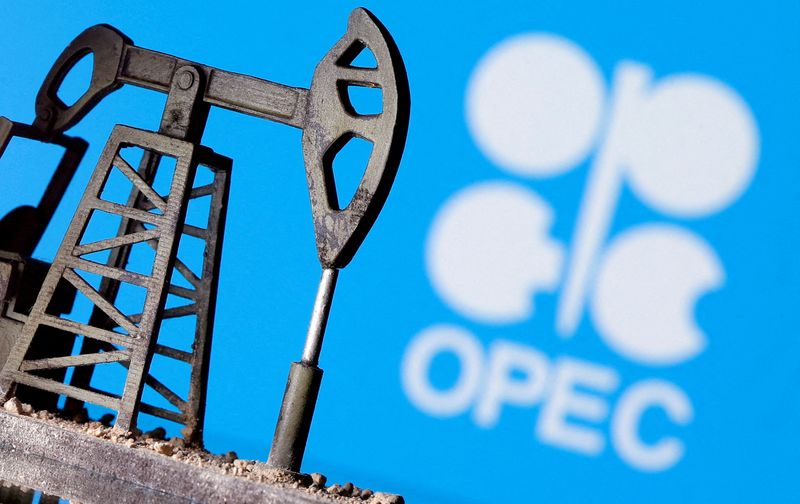By Alex Lawler
LONDON (Reuters) -OPEC on Monday cut its forecast for global oil demand growth in 2024, reflecting data received so far this year, and also lowered its forecast for next year, marking the third straight downgrade adjustment of the producer group marks.
The weaker outlook highlights the dilemma facing OPEC+, made up of the Organization of the Petroleum Exporting Countries and allies such as Russia, which plans to start increasing production in December after previously postponing increases against a background of falling prices.
On Monday, OPEC said in a monthly report that global oil demand will rise by 1.93 million barrels per day (bpd) in 2024, down from the 2.03 million barrels per day growth it expected last month . Until August, OPEC had left the forecast unchanged since it was first made in July 2023.
China was responsible for most of the rating downgrade in 2024. OPEC lowered its Chinese growth forecast from 650,000 barrels per day to 580,000 barrels per day. While government stimulus will support demand in the fourth quarter, oil use faces headwinds from economic challenges and moves toward cleaner fuels, OPEC said.
“Diesel consumption remained subdued due to slowing economic activity, especially a slowdown in construction and housing construction, and the replacement of petroleum diesel in heavy trucks with liquefied (LNG),” OPEC said regarding August.
Oil suffered an earlier decline of about 2% after the report was published, trading below $78 a barrel.
There is a deep divide among forecasters over the strength of demand growth in 2024, partly due to differences of opinion against China and over the pace of the global transition to cleaner fuels. OPEC still tops industry estimates and has a long way to go to match the International Energy Agency’s much lower vision.
OPEC said demand growth this year was still above the historical average of 1.4 million barrels per day before the COVID-19 pandemic, which caused a drop in oil consumption.
For next year, OPEC lowered its estimate of global demand growth for 2025 from 1.74 million barrels per day to 1.64 million barrels per day.
LIBYA, IRAQ, RUSSIA CIRCUMSTANCE
OPEC+ has implemented a series of production cuts since late 2022 to support the market, most of which will last until the end of 2025.
The group was due to start phasing out the latest cut of 2.2 million barrels per day from October, but decided to postpone the plan for two months after oil prices fell.
The OPEC report shows that production fell in September due to the unrest in Libya and a cutback by Iraq. OPEC+ pumped 40.1 million barrels per day, down 557,000 barrels per day from August. Iraq pumped 4.11 million barrels per day, down 155,000 barrels per day, but still above its quota of 4 million barrels per day.
In addition to Iraq, OPEC has named Russia and Kazakhstan as among the OPEC+ countries that have pumped above quota.
Russia cut production by 28,000 barrels per day in September to around 9 million barrels per day, the report said, citing data from secondary sources such as consultancy firms. However, Kazakhstan increased production by 75,000 barrels per day to 1.55 million barrels per day.

The OPEC report estimates demand for OPEC+ crude oil, or crude oil from OPEC plus its allied countries, at 43.7 million barrels per day in the fourth quarter, theoretically leaving room for higher production.
Other forecasts indicate less space. The IEA, which represents industrialized countries, expects much lower demand growth than OPEC of 900,000 barrels per day in 2024. The IEA will update its figures on Tuesday.


